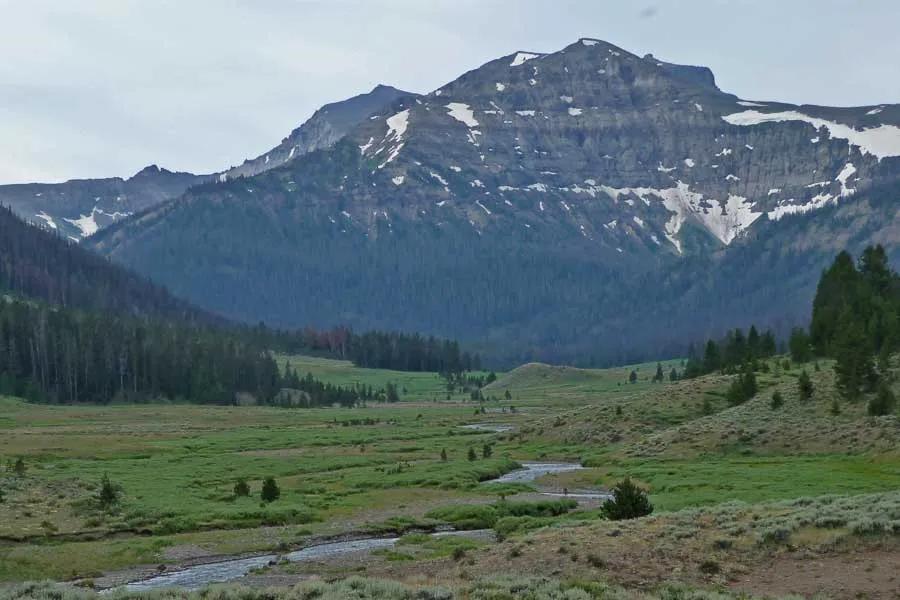Slough Creek is another of the classic meadow waters of the Lamar Valley in Yellowstone National Park. The creek is divided into 4 meadows: Lower, 1st, 2nd, and 3rd. Each meadow is separated by a small, swift canyon section. Only the Lower Meadow is road accessible, and even much of it requires some hiking. There is a campground and trailhead at the top of the Lower Meadow. From the trailhead it is approximately 2 miles to the 1st Meadow, 4 miles to the 2nd, and 8 miles to the 3rd. Backcountry campsites are available but permits are required and these tend to fill up fast. Advanced planning is a must. The fish in Slough Creek are mostly Yellowstone Cutthroats with the occasional Rainbow or Cutt-Bow. Most of the fish are in the 13-18 inch range, with some fish over 20 inches present, especially in the Lower Meadow. These are among the most educated and tough to fool trout in all of Yellowstone Park. The water is gin clear and the stream has an extremely flat gradient. You will often be able to see groups of large Cutthroats holding in the pools. If you are lucky, they will be distracted by an insect hatch and rising freely.
Fishing Slough Creek
Slough Creek is typically the first of the Lamar Valley streams to clear from spring runoff; sometime around the first of July. The water will still be high, and Slough is awfully large for a "creek", so your best chance this time of year is during a Mayfly hatch. Be on the lookout for various Drakes, Pale Morning Duns, and midges. Hatches will typically start mid-morning and continue until early or mid afternoon, with spinner falls occurring later in the the evening. As the weather heats up and the water drops, terrestrials become the most important food source on Slough. You will still want to be prepared for mayfly hatches, but blind fishing with hoppers becomes effective as well.
In August, the fish will have PHD's in detecting fake grasshoppers, so smaller terrestrials like beetles or ants become very important. Following the same pattern as the Lamar, fishing will pick back up a bit in September with cooler weather and increased hatches. Blue Winged Olives, Midges, and Fall Drakes will bring fish to the surface and perhaps let there guard down a bit. Fishing will hold up until the weather turns. Just as with the Lamar, it is very tough to fish Slough when it is cold and the fish are not feeding on the surface.
Given the nature of the stream and the large, heavily pressured fish, this is not a spot for beginner fly anglers. Even the best anglers will be humbled on Slough at times. It is important to fish light tippet, usually 5X or 6X. It is also a good idea to lengthen your leader when you are fishing Slough. 12ft is standard and 15ft+ is not unheard of. While the gin clear water makes the fish wary, it does benefit the angler in that most of the fishing is sight casting rather than blind fishing. This is more hunting than fishing. It is important to pick out the individual fish that you are going to try to catch, and get yourself into a position to make the possible presentation.
Contact Montana Angler Fly Fishing for guided fly fishing trips in Yellowstone National Park








